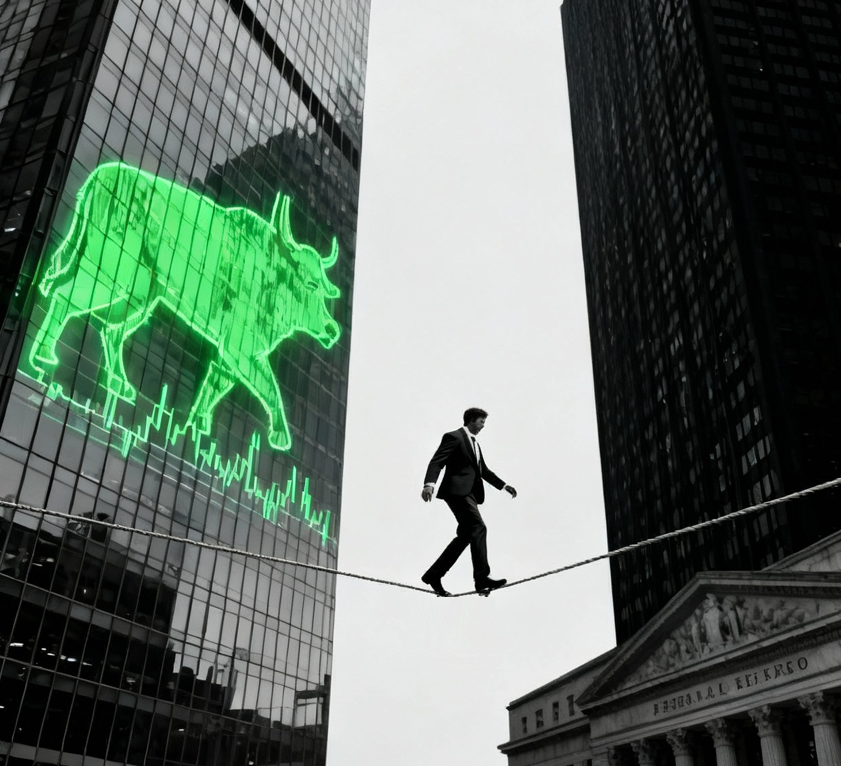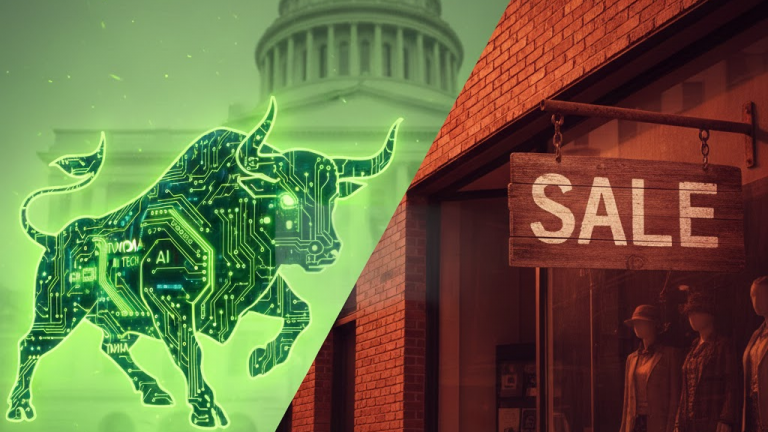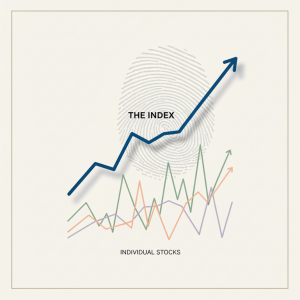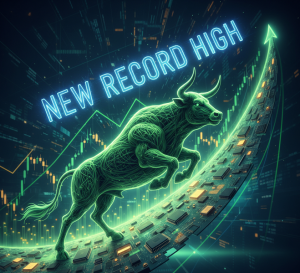Markets Are Betting the House on a Fed Pivot. It’s a Gamble That Could Spectacularly Backfire.
Summary (TL;DR)
A high-stakes calm has settled over Wall Street, but don’t mistake it for peace. With the Nasdaq roaring at all-time highs and traders pricing in a 96% probability of an interest rate cut this week, the market is essentially daring the Federal Reserve to spoil its AI-fueled party. This isn’t just a market “waiting for news”; it’s a market high on its own supply, pricing in a perfect economic landing. The core story this week is the immense risk of complacency.
The real danger isn’t that the Fed fails to cut rates, but that it delivers a “hawkish cut,” a token reduction accompanied by a stern warning and future rate projections (the “dot plot”) that pour a gallon of ice water on hopes for a quick return to easy money.
The Core News (What Happened?)
In the pre-market hours of Monday, September 15, 2025, U.S. stock futures are treading water. Dow futures are up a scant 0.2%, the S&P 500 is flat, and the tech-heavy Nasdaq-100 is down 0.1%. This quiet facade conceals the enormous tension building ahead of the Federal Reserve’s two-day policy meeting, which will culminate in Wednesday’s interest rate decision and, more critically, its updated economic projections.
The Inflation Devil in the Details
The market’s bullish case rests on the headline Consumer Price Index (CPI) figure of 2.9%. While a significant improvement, Fed Chair Jerome Powell and his board are looking past the headline number. Their primary concern is the stubbornness of “core services inflation,” the costs of services like housing, transportation, and healthcare.
This component of inflation has remained stubbornly “sticky” and is far more sensitive to wage pressures than the price of goods. Powell knows that declaring victory while service inflation remains well above the 2% target could destroy the Fed’s credibility and force it to take even harsher measures down the line. The market sees 2.9% and thinks the war is over; the Fed sees sticky core inflation and knows a key battle is still being fought.
The Main Event: Why the ‘Dot Plot’ Matters More Than the Cut
The quarter-point rate cut itself is almost a non-event; it’s already priced in. The real market-moving information will come from the Fed’s Summary of Economic Projections, specifically the “dot plot.”
- What It Is: The dot plot is a chart that anonymously maps out where each of the Fed’s board members expects the federal funds rate to be at the end of the next few years.
- Why It Matters: It is the clearest signal of the Fed’s future intentions. The market is hoping the dots will show a clear path downwards, signaling multiple additional cuts in 2025 and 2026. However, if the dots remain elevated or show fewer cuts than anticipated, it will be a direct repudiation of the market’s euphoric narrative, signaling the Fed’s intent to keep rates “higher for longer” to ensure inflation is truly dead.
The Two Narratives Colliding: The Bull vs. The Hawk

The Bull Narrative (Priced for Perfection): This story, which has dominated 2025, is simple: inflation is beaten, the AI revolution is creating a productivity boom, and the Fed is about to open the monetary spigots, propelling markets even higher. This view sees the upcoming cut as the starting gun for a new, sustained easing cycle.

The Hawk Narrative (The Contrarian View): This camp argues the market is dangerously naive. As found in a recent Bloomberg interview, Michael Hartnett, Chief Investment Strategist at Bank of America, offers a sharp, contrarian take: “The market is throwing a party based on the assumption the bar is about to be open all night. But the Fed isn’t a bartender; it’s a chaperone, and its only job is to make sure nobody gets hurt. A hawkish cut is the most likely outcome, reminding everyone the chaperone is still on duty.”
This view is further supported by the real yield on the 10-Year Treasury. At its current 4.06% yield with inflation at 2.9%, the inflation-adjusted return is a healthy 1.16%. This makes risk-free government bonds a genuinely attractive alternative to an arguably overpriced stock market, potentially siphoning capital away from equities if the Fed doesn’t signal a rapid move to lower rates.
By the Numbers (Key Data & Metrics)
- Nasdaq Composite: Trading at all-time highs.
- Probability of a Fed Rate Cut: 96%
- 10-Year Treasury Yield: ~4.06%
- Headline CPI (Year-over-Year): 2.9%
Disclaimer: This article is for informational purposes only and does not constitute financial, investment, or legal advice. The information provided is a synthesis of publicly available data and expert analysis and should not be considered a recommendation to buy or sell any security. Investing in the stock market involves risk, including the possible loss of principal. Past performance is not indicative of future results. Readers should consult with a qualified financial advisor to determine an investment strategy that is suitable for their own personal financial situation and risk tolerance.






















